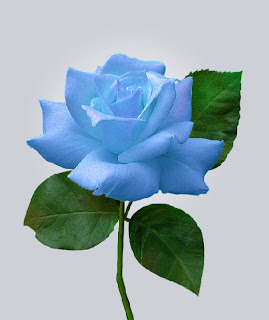 |
| Suntory Ttrue Blue Rose 'Applause' first time displayed in Tokyo in 2009 |
Japanese distiller and beverage manufacturer Suntory Ltd. began its quest for the blue roses in a joint venture with Australian biotechnology firm Florigene Ltd. in 1990. Since roses do not naturally possess the gene for delphinidin, genetic engineers needed to transfer the gene from another plant that had the gene.
 |
| World's further Dream |
Their first attempts were to move the delphinidin gene from petunia. They were not successful at using this version of the gene in the rose, but they were able to move the delphinidin gene from petunia into carnation. The first blue carnations were marketed in Japan, North America and Australia by 1997 under the brand name 'Moondust'.
Suntory's genetic engineers had finally got success in their research in 2004. They extracted the gene that produces blue pigment in pansies and activated it inside the roses. The petals of Suntory's blue roses contain nearly 100 percent of the blue pigment. They also used genetic machinery to suppress the red pigments naturally present in roses. With nearly 100% blue-pigmented petals, blue rose 'APPLAUSE' is the world's first naturally blue rose went on sale in Tokyo in 2009 and first time exported in North America in 2011.
No comments:
Post a Comment